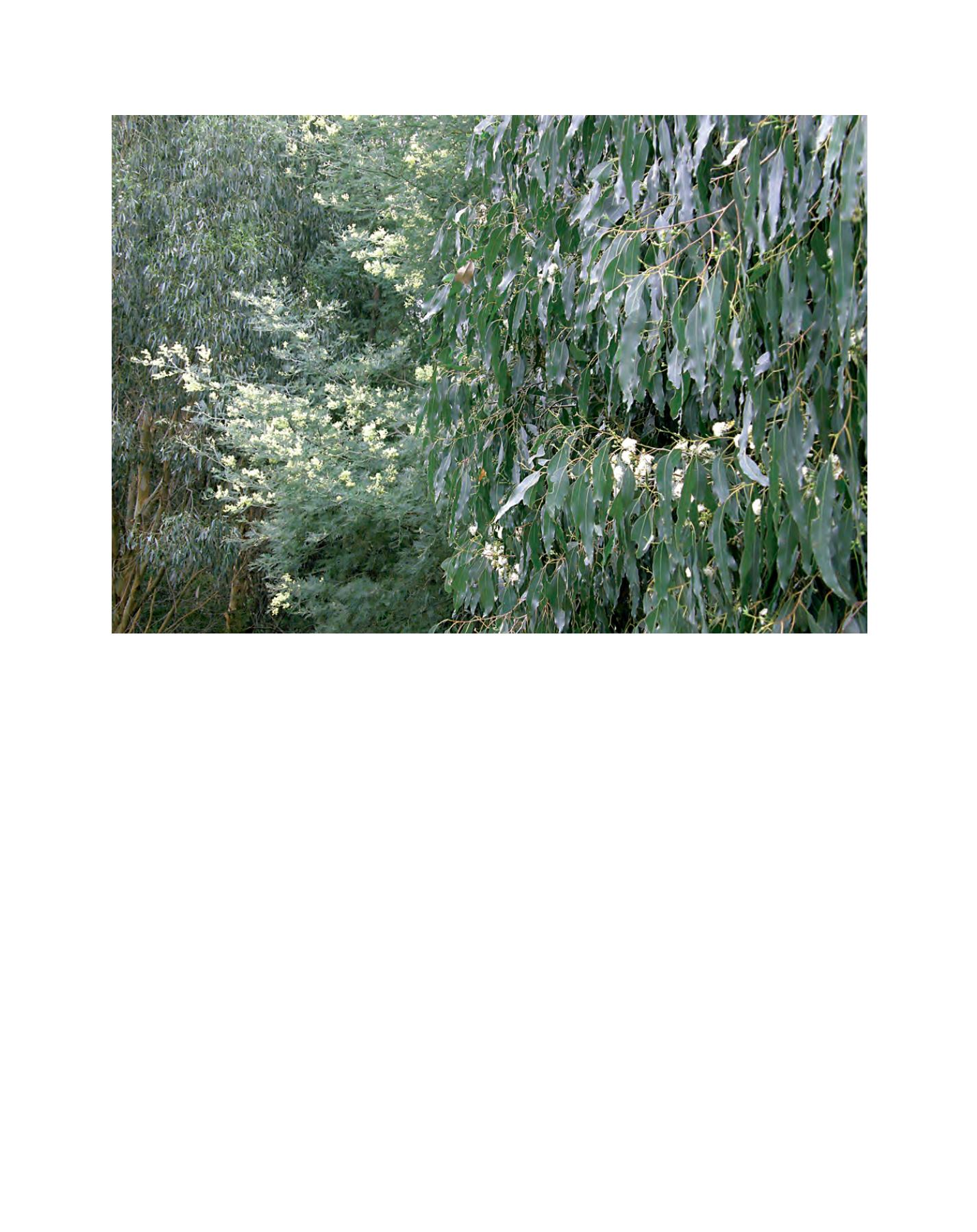

Preparing to plant
Greenfleet works closely with natural resource management
professionals to select species indigenous to the local area for each
planting site. As far as possible, the species selected reflect the pre-
clearing vegetation classes at each site and the relevant species are
selected for each zone within a planting site (i.e. ridgeline species
for ridgelines, and gully species for gullies). Where possible, seed
is collected in the local region.
Some of Greenfleet’s sites are planted with seedlings, while others
are direct seeded. Where seedlings are grown, Greenfleet engages
local nurseries to grow the stock wherever possible – to support
the local community and economy, to benefit from the local exper-
tise, and to reduce transportation requirements for each project.
Proper site preparation is vital to the success of the native forest
revegetation projects undertaken by Greenfleet. Many of the plant-
ing sites have been heavily grazed in the past and the ground is
highly compacted – not ideal for the fine roots of young saplings.
Weeds and pest animals are also common on grazing land that has
been left untended for some time.
Greenfleet works with the landholder to prepare the site to ensure
the best chance of survival for the new forests. While each site is
different, this can include deep ripping of the ground to break up
the soil, spraying for weeds and fencing to exclude pest animals.
Greenfleet selects a ‘planting window’ for each site, which is a
time frame for the planting event based on historical climatic condi-
tions. Where possible Greenfleet plants the seeds or seedlings to
coincide with rainfall events to ensure there is adequate
moisture in the soil to support the establishment of the
young trees.
Maintenance and monitoring
Planting the trees is only the beginning of the Greenfleet
journey. Six months after planting, a first survival
check is conducted to see how the seedlings are doing
and what challenges they are facing. Greenfleet forest-
ers then perform an annual survival check-up for the
next five years, followed by an inspection every five
years thereafter. Forests are also measured for carbon
once the trees reach a sufficient size. As the forest
estate grows, so too does the monitoring task.
The landholder is responsible for ongoing mainte-
nance of the forest – this includes weed and pest animal
control, maintaining fire breaks, etc. Should any event
occur that affects the forest, the landholder notifies
Greenfleet and a forester visits the site to assess and
determine any remedial action required.
Battery Creek (profiled on previous page) is just one of
Greenfleet’s native forest revegetation projects and helps
to illustrate that action on climate change can also bring
about significant benefits for the Australian landscape
and the people who rely on the environmental services
that native forests deliver.
[
] 83
Strzelecki Gum (foreground) and Silver Wattle in flower – now a well established forest, you’d never guess it was planted by human intervention less than a decade ago
Image: Greenfleet Australia
















